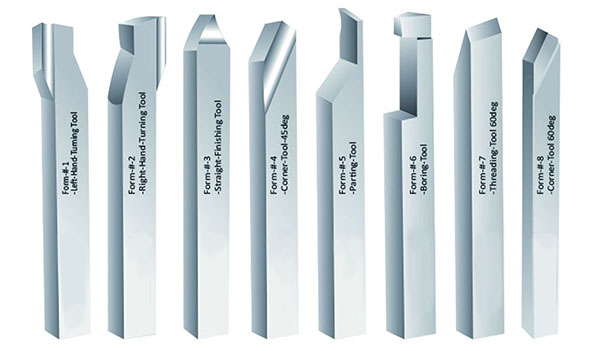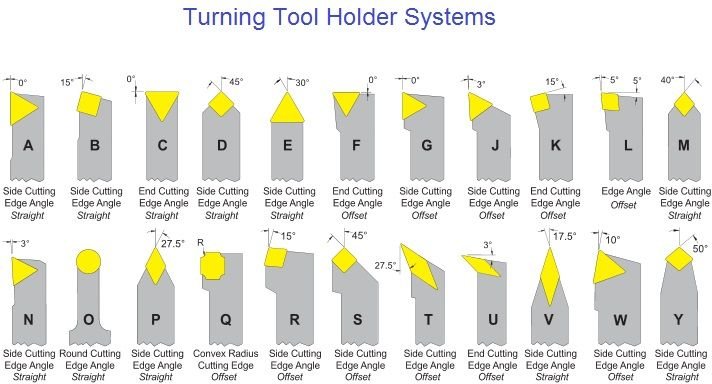Table of Contents
Metal turning tools for beginners include carbide inserts, high-speed steel (HSS) tools, and parting tools. These tools help shape and finish metal workpieces.
Starting with metal turning can be daunting, but having the right tools makes it easier. Carbide inserts are durable and provide a smooth finish, making them ideal for beginners. High-speed steel (HSS) tools are versatile and cost-effective, perfect for those just starting out.
Parting tools are essential for cutting off completed sections of a workpiece. Choosing the right tools can significantly impact your learning curve and results. Understanding their functions and uses will set a solid foundation for your metal turning journey. Proper tools ensure precision, efficiency, and a more enjoyable experience.
Introduction To Metal Turning
Metal turning is a type of machining. It involves using a lathe to shape metal. The process removes material from a workpiece. This creates cylindrical parts. Precision is crucial in metal turning. The lathe spins the metal, and a cutting tool shapes it. Different tools create different shapes and finishes. Understanding these tools helps achieve better results.
Using the correct tools ensures better quality. Proper tools make the work easier and safer. They reduce wear on the lathe and improve efficiency. Beginners benefit from using high-quality tools. These tools last longer and perform better. Investing in good tools saves time and money in the long run. Safety also improves with the right tools. Avoid accidents by choosing the best tools for metal turning tasks.

Credit: www.penntoolco.com
Lathe Selection For Beginners
There are different types of lathes. Benchtop lathes are small and easy to use. Engine lathes are more powerful and versatile. Toolroom lathes offer high precision. CNC lathes use computer controls for complex tasks. Each type serves different needs.
Durability is very important. The lathe should be made of strong materials. Ease of use matters for beginners. Look for simple controls and clear instructions. Size is another key factor. Make sure it fits your workspace. Safety features should not be ignored. Always check for emergency stop buttons and protective shields.
Essential Metal Turning Tools
Cutting tools are vital for metal turning. Lathe tools help shape metal pieces. High-speed steel (HSS) and carbide tools are common. HSS tools are cheaper. They are also easy to sharpen. Carbide tools are stronger. They last longer but cost more.
Accurate measurements are crucial. Calipers measure thickness and diameter. Micrometers provide precise readings. Dial indicators check alignment. Surface plates ensure flatness. Gauges verify dimensions.
Tool Materials And Coatings
Tool materials are crucial for metal turning. High-speed steel (HSS) is easy to sharpen. It’s suitable for beginners. Carbide tools last longer and cut faster. They can handle high speeds and temperatures. Ceramic tools are great for hard metals. They are more fragile than carbide. Diamond tools offer the best performance. They are the most expensive.
Tool coatings improve tool life. They reduce wear and tear. Titanium nitride (TiN) is a common coating. It increases hardness and reduces friction. Titanium carbonitride (TiCN) is harder than TiN. It is good for harder materials. Aluminum oxide (Al2O3) coatings resist heat well. They are perfect for high-speed operations. Diamond-like carbon (DLC) coatings are very durable. They provide excellent surface finish.
Tool Holders And Inserts
Tool holders are important for metal turning. They keep the cutting tools steady. Strong tool holders make turning easier and safer. Beginners need simple tool holders. Easy-to-use holders help new users learn fast. Look for holders that fit your machine well.
There are different types of tool holders. Quick-change holders save time. Adjustable holders fit many tools. Choose the right one for your needs. Ask for help if you are unsure.
Inserts are the cutting parts of the tools. They come in different shapes and sizes. Square and triangle inserts are common. Sharp inserts cut well but wear out fast. Rounded inserts last longer but cut slower. Beginners should start with basic inserts. These are easy to use and replace.
Inserts are made from different materials. Carbide inserts are strong and last long. Ceramic inserts are very sharp. Choose inserts that match your work. Keep extra inserts handy for quick changes.

Credit: www.pinterest.com
Sharpening And Maintenance
Use a whetstone to sharpen your metal turning tools. Hold the tool at a 20-degree angle. Move it back and forth on the stone. Keep the angle steady. This keeps the edge sharp. Use water or oil on the stone. This helps to keep it smooth. Repeat the process until the tool is sharp. Finally, test the edge on a piece of wood.
Clean your tools after each use. Wipe them with a dry cloth. Store them in a dry place. Use rust remover if you see any rust. Oil the moving parts regularly. This keeps them working well. Check for loose screws and tighten them. Replace any worn-out parts.
Safety First: Protective Gear And Best Practices
Always wear safety goggles to protect your eyes. Use ear protection to save your hearing. Gloves keep your hands safe from cuts. Face shields protect your face from flying debris. Aprons shield your clothes and body. Safety boots guard your feet against heavy objects.
Keep your workspace clean to avoid accidents. Use clamps to hold your work steady. Check your tools before use. Follow the instructions for each tool. Never rush your work. Stay focused and avoid distractions. Turn off machines when not in use.
Learning Resources And Community
Books about metal turning are very helpful. They teach basic and advanced techniques. Online tutorials are great too. Many videos show step-by-step instructions. You can pause and replay them. This helps you learn at your own pace. Combining books and videos gives a well-rounded learning experience.
Joining metalworking communities is beneficial. You can ask questions and get answers. People share tips and tricks. These communities are friendly and supportive. Forums and social media groups are popular choices. You can also attend local meetups. Meeting in person can be very inspiring.
Projects To Hone Your Skills
Start with a simple candle holder. Use a small piece of metal. Shape it using basic turning tools. Another easy project is a metal pen. It helps you learn control. Also, make a small gear. Practice making precise cuts.
Make a metal chess piece. This project needs more detail. Another challenging project is a miniature engine part. It tests your accuracy. Try creating a metal vase. This project improves your shaping skills.
Troubleshooting Common Issues
Tool chatter is a common problem. It makes the tool vibrate. This can ruin your work. To fix this, you need to secure the tool tightly. Also, reduce the speed of your lathe. A slower speed often helps. Make sure the tool is sharp. A dull tool will chatter more. Use a steady hand. This can also reduce chatter.
Tool wear and breakage happen often. To prevent this, use the right tool for the job. Always keep your tools clean. Dirt can cause wear. Lubricate your tools. Oil can help them last longer. Store your tools properly. This prevents damage. Be gentle with your tools. Too much force can break them. Regular checks can help you spot problems early.

Credit: www.amazon.com
Frequently Asked Questions
What Wood Turning Tools Should A Beginner Use?
Beginners should use a roughing gouge, spindle gouge, parting tool, and bowl gouge. These tools cover basic woodturning tasks.
What Is The Easiest Metal To Lathe?
Aluminum is the easiest metal to lathe. It’s soft, lightweight, and offers excellent machinability, making it ideal for beginners.
What Is The Most Versatile Turning Tool?
The most versatile turning tool is the carbide insert tool. It offers durability, precision, and adaptability for various materials.
What Can I Make With A Metal Lathe For Beginners?
Beginners can make simple projects like candle holders, chess pieces, rings, tool handles, and small bowls using a metal lathe.
Conclusion
Mastering metal turning tools can be an exciting journey for beginners. Start with the basics and practice regularly. Invest in quality tools and always prioritize safety. With patience and dedication, you’ll soon see impressive results. Happy turning, and may your projects shine with precision and creativity!
